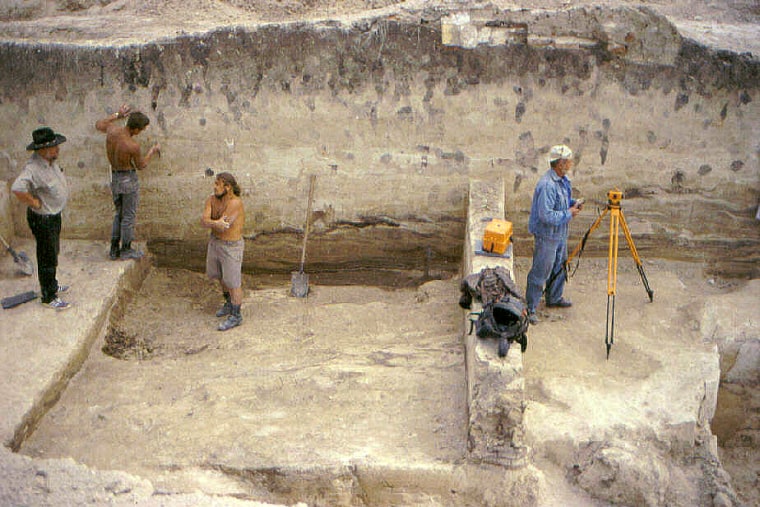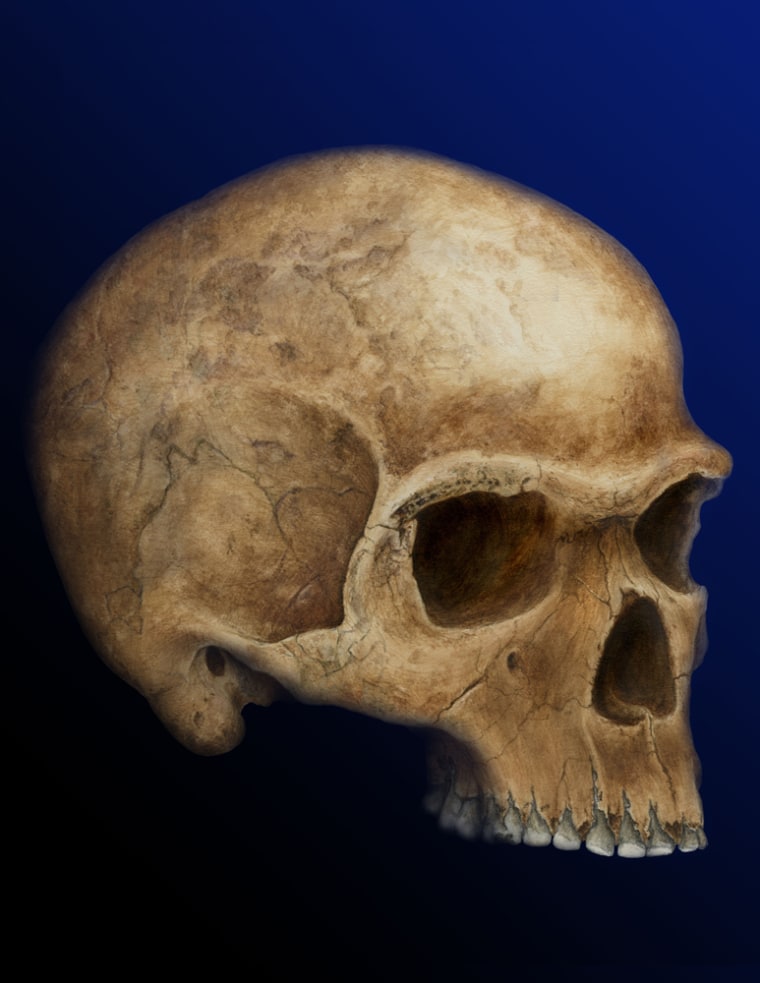An ancient skull from South Africa and carved tools and ornaments from Russia paint a rare picture of the time when modern humans migrated out of Africa to colonize Europe, researchers say.
The two reports in Friday's issue of the journal Science link the far reaches of Europe to southernmost Africa across a short time span of 36,000 years ago to 45,000 years ago.
“The big surprise here is the very early presence of modern humans in one of the coldest, driest places in Europe,” said John Hoffecker, of the University of Colorado at Boulder’s Institute of Arctic and Alpine Research.
“It (Russia) is one of the last places we would have expected people from Africa to occupy first,” Hoffecker said in a statement.
Scientists generally agree that modern humans spread out of Africa starting about 50,000 years ago, quickly establishing Stone Age cultures throughout Europe, Asia and Australia.
But there is a big gap in the evidence until about 30,000 years ago.
Window into mysterious period
Ted Goebel of the Center for the Study of the First Americans at Texas A&M University said the two studies open a window into this mysterious period.
“Current interpretations of the human fossil record indicate that fully modern humans emerged in sub-Saharan Africa by 195,000 years ago,” Goebel wrote in a commentary published in Science.
“By 35,000 years ago, modern humans thrived at opposite ends of Eurasia, from France to island southeast Asia and even Australia. How they colonized these and other drastically different environments during the intervening 160,000 years is one of the greatest untold stories in the history of humankind.”
Very little hard evidence has been found linking early modern humans in Africa to these dispersed cultures. A less popular theory holds that modern humans evolved independently in Africa and Europe, Asia and elsewhere from Homo erectus, which had migrated much earlier.
Re-examining an old skull
For one of the studies, Frederick Grine of Stony Brook University in New York and an international group of colleagues re-examined a skull discovered in 1952 near Hofmeyr, South Africa.
It looked much more modern than other African skulls but it had been hard to date. The researchers used a combination of advanced optical and uranium methods to date the skull to about 36,000 years ago.
This was key, because few human fossils have been found in sub-Saharan Africa that date to between 70,000 and 15,000 years ago. Plenty of sophisticated stone and bone tools and artwork can be found, and fossils have been found in northern Africa and nearby areas of Asia and Europe — but little from the birthplace of humanity itself.
“Here is the first skull of an adult modern human from sub-Saharan Africa that dates to the critical period, and one that can speak to the relationship of early moderns from Africa and Europe,” Goebel wrote.
Other evidence
Hoffecker’s Russia team lacks a skull, but the researchers have other evidence placing humans there at a crucial gap in time.

They, along with the Russian Academy of Sciences, reported on human teeth, tools, beads, carved ivory and other artifacts dug up at the Kostenki archaeological site on the Don River in Russia, about 250 miles (400 kilometers) south of Moscow.
They date these artifacts to 45,000 to 42,000 years ago, an age similar to other items found in Western Europe.
One carved piece of mammoth ivory may be the unfinished head of a small human figurine. “If confirmed, it will be the oldest example of figurative art ever discovered,” Hoffecker said.
